Can Artists Combine Both Asymmetrical and Symmetrical Elements in One Work of Art
Have you lot always thought well-nigh what is residue in art exactly? Balance in Fine art refers to the use of creative elements such as line, texture, colour, and form in the cosmos of artworks in a way that renders visual stability. Balance is one of the principles of organization of structural elements of art and design, along with unity, proportion, accent and rhythm.[i] When observed in general terms balance refers to the equilibrium of different elements. However, in fine art and design, balance does not necessarily imply a complete visual or even physical equilibrium of forms effectually a middle of the composition, but rather an arrangement of forms that evokes the sense of balance in viewers. It is through a reconciliation of opposing forces that equilibrium or residuum of elements is accomplished in fine art. Residuum contributes to the artful say-so of visual images and is one of their basic edifice blocks. There are several dissimilar types of residue. Regarding terminology, the most used terms are asymmetrical balance, symmetrical balance and radial balance. These types of remainder are present in fine art, architecture and design. The history of their application and development is every bit long as human being history, simply for this text we volition focus on the importance of balance in art and design and give some examples by and large from modern and contemporary art.
If we are to understand the importance of balance in fine art we need to apply the same reasoning as when we observe a three-dimensional object. If a iii-dimensional object is not counterbalanced it will most probably tip over. All the same, when it comes to 2-dimensional subjects painted on flat surfaces, we demand to rely on our own sense of space and remainder. We need to apply the aforementioned illustration as with the physical object - only now with i difference. If three-dimensional objects are easily evaluated regarding balance equally they share the same space with us, in modern and contemporary fine art - especially in art fabricated on flat surfaces - the sense of balance comes from a combination of line, color and shape. If nosotros evaluate the residuum of concrete objects regarding the distribution of their weight, same applies to art just only at present the distribution of weight is non concrete but visual.[ii] When creating residuum in two-dimensional art pieces, artists and designers need to exist careful in allocating weight to different elements in their work, equally likewise much emphasis on ane chemical element, or a group of elements tin cement viewers' attention to that function of work and leave others unobserved. However, regardless of media we are talking nearly, balance is important as it brings visual harmony, rhythm and coherence to artwork, and it confirms its completeness.
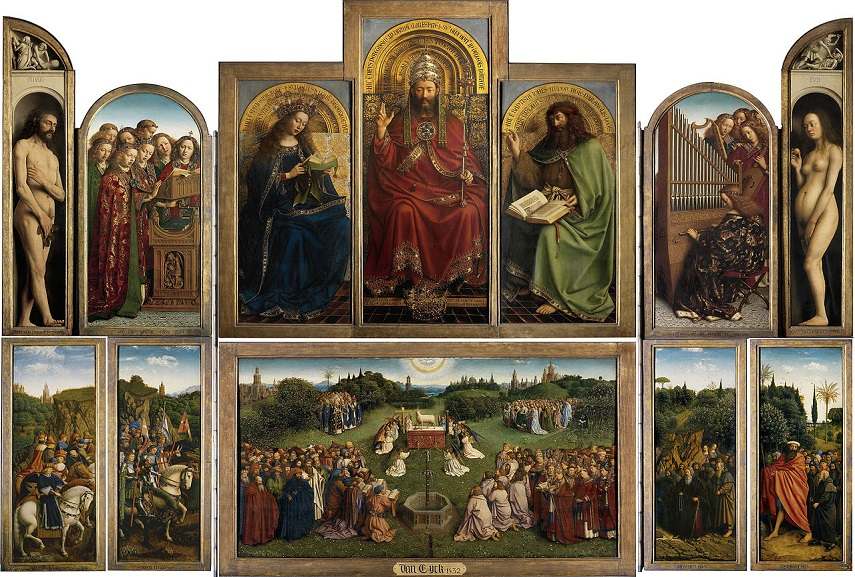
Ordering of Art Worlds - Symmetrical Remainder
Symmetrical balance can be easily established or observed in art. The single affair art practitioners and designers need to do is to draw an imaginary line through the middle of their piece of work and to brand certain that both parts are equal regarding the horizontal or vertical axis. Being symmetrical implies that none of the elements stand out, so symmetrical balance in art is also sometimes referred to as formal rest.[3] Left to right rest is achieved through symmetrical arrangements, but vertical balance is equally important. If the creative person overemphasizes either the upper or lower function in their compositions this can destabilize the coherency and consistency of an artwork. Symmetrical balance is used when feelings of club, formality, rationality and permanence should be evoked, and it is oftentimes employed in institutional architecture and religious and secular art.
Examples of Symmetrical Balance in Victor Vasarely'south Op Art
Gauge, Inverted and Biaxial Symmetry
Symmetrical rest tin accept a few subgroups such as estimate or almost, inverted and biaxial symmetry. Nigh or approximate symmetry relates to forms in which two halves are not mirrored images, simply accept some slight variations. It was used oftentimes in early on Christian religious paintings. Inverted symmetry should be carefully used equally information technology can throw the image off the balance. In inverted symmetrical residuum 2 halves of an artwork mirror each other along the horizontal axis like in playing cards, while biaxial symmetry pertains to artworks with symmetrical vertical and horizontal axis. Although biaxial symmetrical balance may exist more applicable in design than art, information technology is not unusual for practitioners to create works following this type of residual. Op art is inevitably i of the all-time examples of this principle among modernist art movements. Victor Vasarely, frequently chosen the father of Op fine art move, used biaxial symmetrical residue in his paintings.[4] It may appear that this type of residual is the nearly inexpressive, repetitive and rigid as it requires multiple repetitions of motifs, but Vasarely'due south art is a proficient instance of inherent dynamism in this type of works. Careful most the balance, Vasarely repeatedly combined shapes of contrasting colors creating in this mode a kinetic optical experience from static, flat forms.
Exist sure to check out a selection of works by Victor Vasarely on our market place!
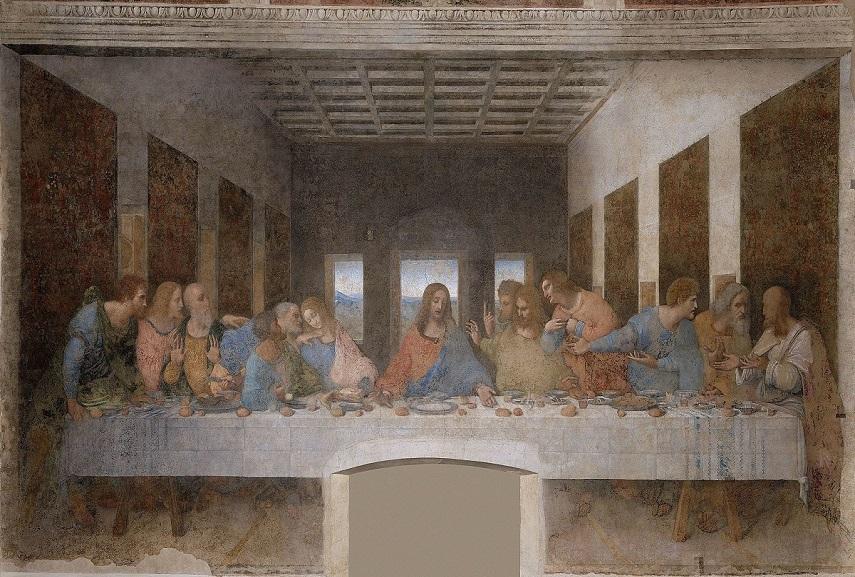
Perspective in Residue
In whatever fine art perspective plays an important part. Particularly in figurative painting accurate application of perspective greatly contributes to the sense of rest. As seen throughout history, perspective in visual arts changed significantly. The old Egyptians used the and then-chosen aspective perspective - the organisation in which each element is shown regarding its importance and characteristics. Combinations of perspectives are often used within a single figure, such as both frontal and profile views.[v] Greek artists tried to reach a sense of balance in art and develop perspective post-obit the instructions proposed by Aristotle in Poetics, where he suggests the utilise of skenographia for the creation of depth on stage in theatrical plays. Subsequently on, medieval sculptors and illustrators understood the importance of perspective and showed some feeble attempts to present the elements in the distance smaller to the viewers, but it was not until the early Renaissance and Giotto's art that perspective based on geometrical method was first probed. Filippo Brunelleschi was one of the earliest artists to use geometrical method where perspective lines converge at one point at the horizon line in its full force. Post-obit these developments modern and contemporary fine art farther evolved in the utilize of perspective and playing with residue. It is either employed after the traditional standards of composition, or twisted and negated depending on the artful and thematic scope of each artwork.
Leonardo da Vinci's mural painting The Last Supper is an example of a work of art where gauge symmetrical balance has reached the level of perfection and where perspective plays an integral role in it likewise. The center of the mural and the converging point on the horizon is occupied past the effigy of Christ, while his disciples are symmetrically bundled on both his sides in the composition.
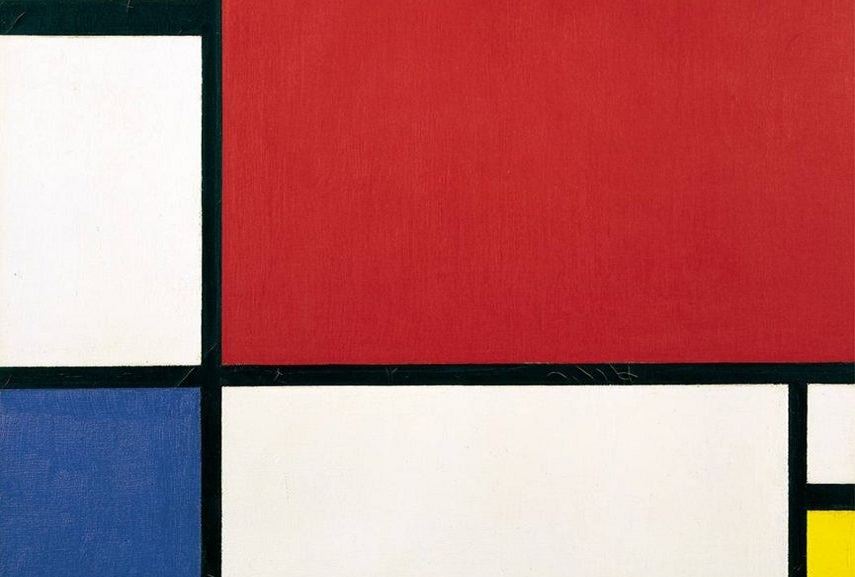
Expressiveness through Multifariousness - Asymmetrical remainder
In contrast to symmetrical remainder which can render works to be also rigid, formulaic and insipid, asymmetrical balance offers greater expressive and imaginative liberty to the artists. Asymmetrical balance in fine art tin exist achieved through various elements that share contrasting visual principles—smaller, lighter, darker, or empty forms and spaces are ever contrasted and balanced by their counterparts.[half-dozen] Due to greater freedom that asymmetrical balance gives to practitioners this type of balance is often called informal rest as well. While in symmetrical balance objects and motifs are commonly copied around a fulcrum, asymmetrical rest allows for objects to remainder around the center. The easiest mode to empathize this type of residual is to imagine residual scale where weights on ane side balance the ones on the other, but they are not of the aforementioned size, color, shape, texture or weight.[7] There is a balance present between these disparate objects but no replication of forms and motifs.

Balance of Asymmetry in Hiroshige and Mondrian
Prints of Japanese artist Hiroshige can be taken as 1 of the examples where disproportion in residue creates visual works of groovy aesthetic value. The print Man on Horseback Crossing a Span can be taken as an illustration of this principle. A huge tree outweighs the other part of the impress where only empty space and shadows of span and mountains are shown, but nonetheless, the impress equally a whole is a dynamic and successful artwork. Famous for his apply of asymmetrical balance in art is Piet Mondrian likewise. One of the founders of De Stijl motility, Mondrian used main colors with black and white and created compositions that are asymmetrical in the distribution of elements merely which nevertheless create a potent sense of balance, harmony and rhythm in each piece of work. He distilled his abstract art to uncomplicated, geometrical forms in search for a universal balance and harmony.
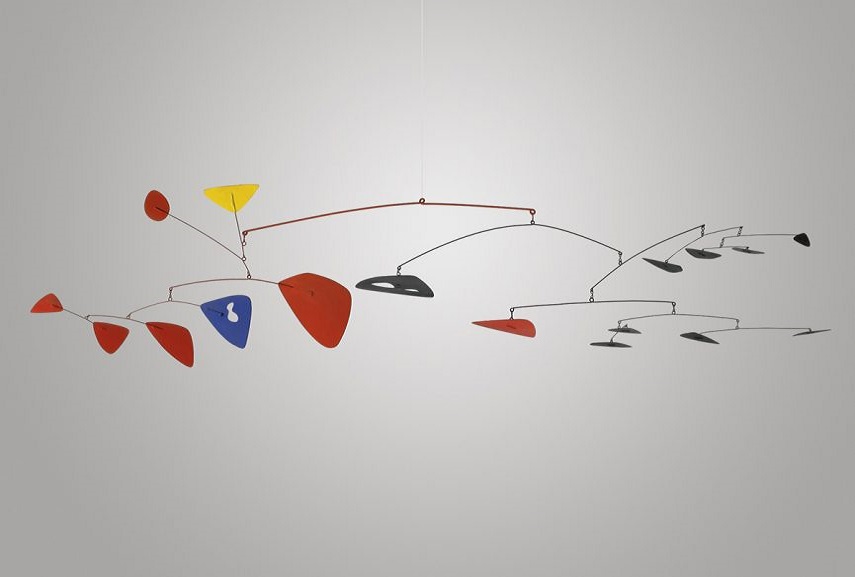
Perpetual Balancing of Calder'due south Mobiles
Alexander Calder examined form, color and remainder in his mobile sculptures, making a further stride towards broadening of understanding and importance of residuum in art. His mobile sculptures - although asymmetrical and unstable - actively engage infinite and through their motility constantly search for rest. The motility of these delicately crafted Mobiles is afflicted by air movements or touch. Here, residual is not employed equally some fixed aesthetic or compositional decision but is active forcefulness that affects the firsthand shape and dynamics of Calder's kinetic art. Instead of being deliberately achieved past the creative person, Calder leaves his work to residue itself and to - through constant movement - negotiate and renegotiate its rest and form.
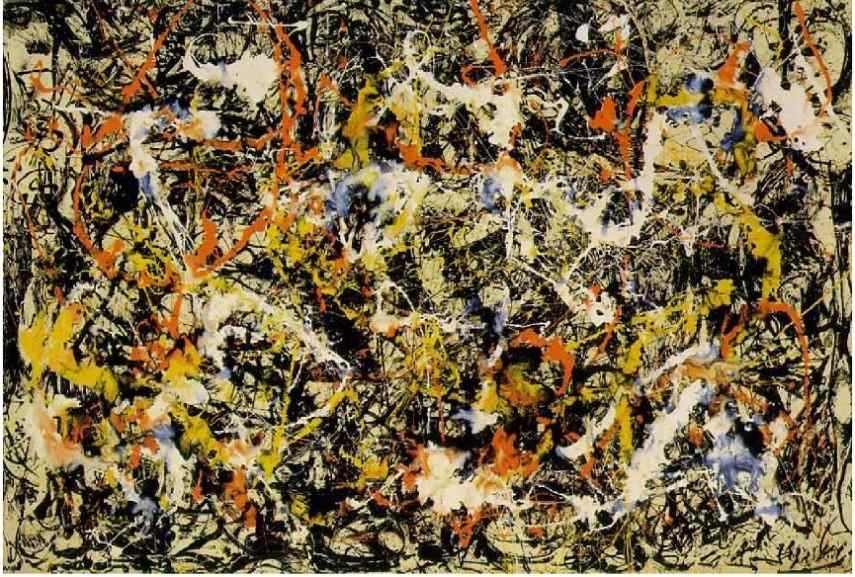
Radial and Mosaic Balance
In dissimilarity to asymmetrical and symmetrical residual, radial balance in art although dependent on similar elements such every bit middle and mirroring of forms, differs in the manner forms are distributed. Instead of following horizontal or vertical centrality forms are arranged around the center of compositions, radiating from it similar the rays of lord's day - hence the term radial. Mosaic or crystallographic rest refers to visual compositions that practise non have focal betoken or fulcrum, and therefore lack of hierarchy and emphasis is present. Sometimes this type of balance is too called 'allover' rest.[8] Although it may seem that fine art and design that use mosaic rest are chaotic, repetitive, full of visual noise and disorder, they actually possess consistency and dynamism in the credible chaos of forms and patterns. One example where this type of residual reached the highest expressive and artful quality is work of Jackson Pollock and his action painting of dripping paint.

Balance Art of Contemporary Artists
Matt Calderwood and Erwin Wurm are amidst contemporary artists who deploy rest not just every bit a effective principle of their works, but as an active element in the formation of their sculptural art. Information technology could be said that residual is the main star of their sculptures. Matt Calderwood uses mundane, everyday objects and combines them through the sole manipulation of residual. All the elements in one sculpture are co-dependent of each other, and every slight change could throw them out of balance and destroy the sculpture. Erwin Wurm goes even further every bit he engages visitors of his shows to participate in his sculptural works. In a series titled I Infinitesimal Sculpture he used bottles filled with water, tennis assurance and other objects and enticed visitors to keep them in place by balancing them between their bodies or other surfaces. Visitors thus became performers in artist's living and balancing sculptural human activity. Adequate to showcase contemporary precarities, balance fine art of Calderwood and Wurm take the medium of sculpture and used objects to the extreme limits. Rendering them both dangerous and prone to devastation with every, fifty-fifty slightest move or body twitch and at the same time poised and in equilibrium with the surrounding earth, such artworks are testaments to the contemporary extremes of existence.
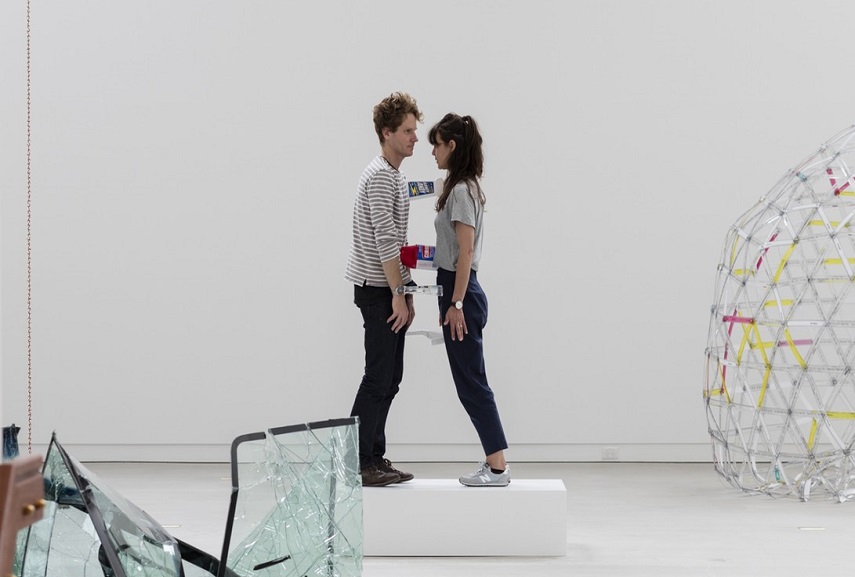
Balance in Design and Art
Similar visual principles use to both art and pattern when information technology comes to residual. The principle of rest that tin can be sensed and directly observed plays an important role in any visual piece of work as it adds to its completeness and expressive quality. Throughout history different art movements and periods demonstrated a preference for diverse forms of rest. Renaissance paintings unremarkably possess symmetrical or judge balance while Baroque aesthetics of exuberance and exaggerated motility institute in asymmetrical remainder the adequate formula for its dynamic compositions. In mod and contemporary art the definition and limits of balance are constantly probed and examined, as observed from Calder's Mobiles. Instead of being set and fixed past the artist, rest in art becomes a quality often accomplished through adventure and sometimes even through physical interaction with the observer. In contemporary art forcing objects into balance that defies physical laws is another expressive tool referencing the precarity of everyday existence. Beingness 1 of the major principles of art and design, residuum is straight dependent on the intimate sense of artist, designer and ultimately, the viewer. Diverse manipulations with visual principles and elements throughout history grow, but balance remains a constant that cannot be countermanded.

Editors' Tip: Pictorial Composition (Composition in Art) (Dover Art Didactics)
Composition is of paramount importance for a successful painting. All elements of a painting may be excellent just if good composition is defective the artwork will neglect. Composition relates to the harmonious use of versatile elements in art that create a whole. In this book, Henry Rankin Poore analyses works of both old masters and modernists and through examples explains the principles of art composition. Importance of balance in art takes a central stage in this book, as information technology is a topic considered in greatest detail. Richly illustrated with over 166 reproductions of artworks of Cézanne, Goya, Hopper and others, this book is a necessary asset to both practitioners and art lovers akin.
References:
- Anonymous, Principles of Blueprint, char.txa.cornell.edu. [September 14, 2016]
- Breadly South., (2015), Design Principles: Compositional Rest, Symmetry And Asymmetry, Peachy magazine. [September 14, 2016]
- Anonymous, Residuum – Symmetry, daphne.palomar.edu [September 14, 2016]
- Pack A., Original Creators: The Begetter of Op Art Victor Vasarely, thecreatorsproject.vice.com [September 14, 2016]
- Anonymous, What is Aboriginal Egyptian Fine art?, ucl.ac.uk [September 14, 2016]
- Anonymous, Balance, sophia. org [September xiv, 2016]
- Anonymous, Disproportion, daphne.palomar.edu [September fourteen, 2016]
- Wang C., (2015), 4 Types of Balance in Art and Design (And Why Y'all Need Them), shutterstock.com [September 14, 2016]
Featured images: Isamu Noguchi - Red Cube, 1968. New York. Epitome via onthegrid.city; Matt Calderwood - Untitled, 2016. Image via coca.org.nz; Leonardo da Vinci - Study for the groundwork of the Admiration of the Magi, 1452-1519. Paradigm via leonardodavinci.cyberspace; Hiroshige - Autumn Moon at Ishiyama Temple, 1834. Captions, via Creative Commons; Rebecca Horn, High Moon, 1991. Image via sophia.org. All images used for illustrative purposes only.
cheongcheokhongworandoethe59.blogspot.com
Source: https://www.widewalls.ch/magazine/balance-in-art-symmetrical-asymmetrical-radial-blance-design